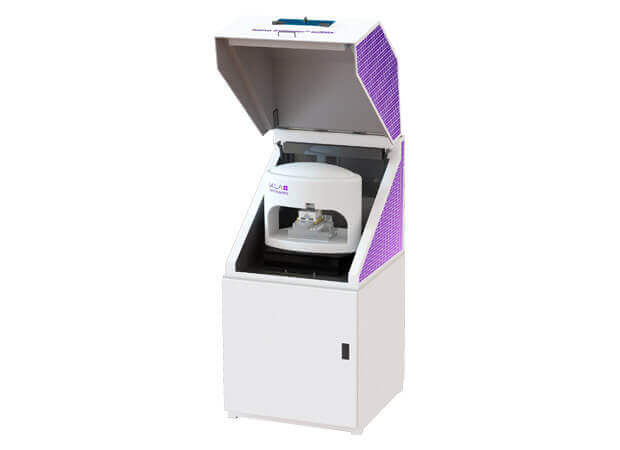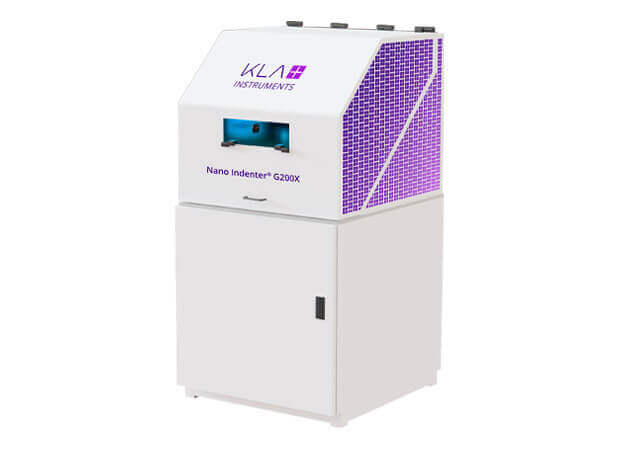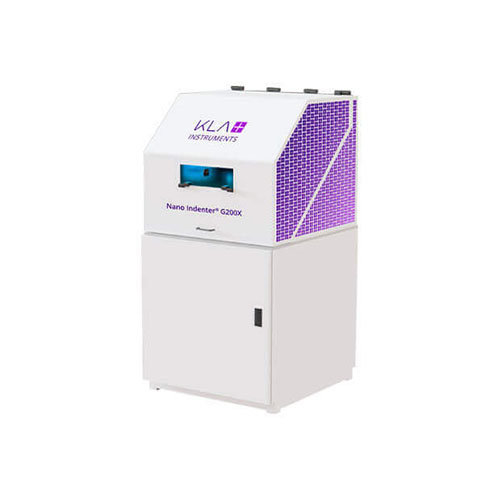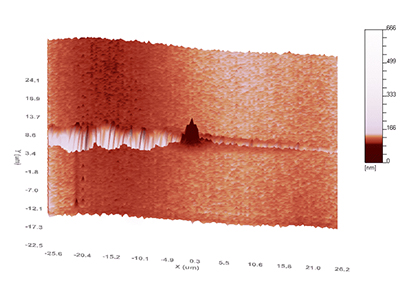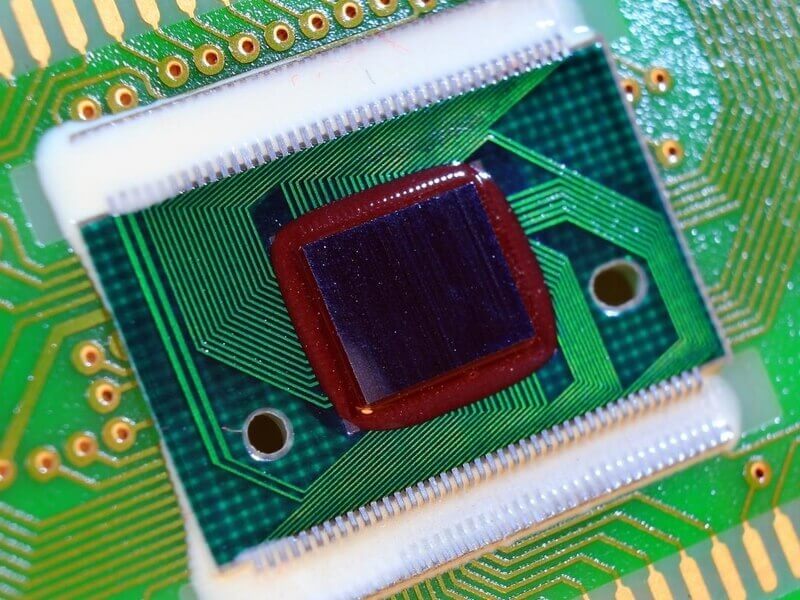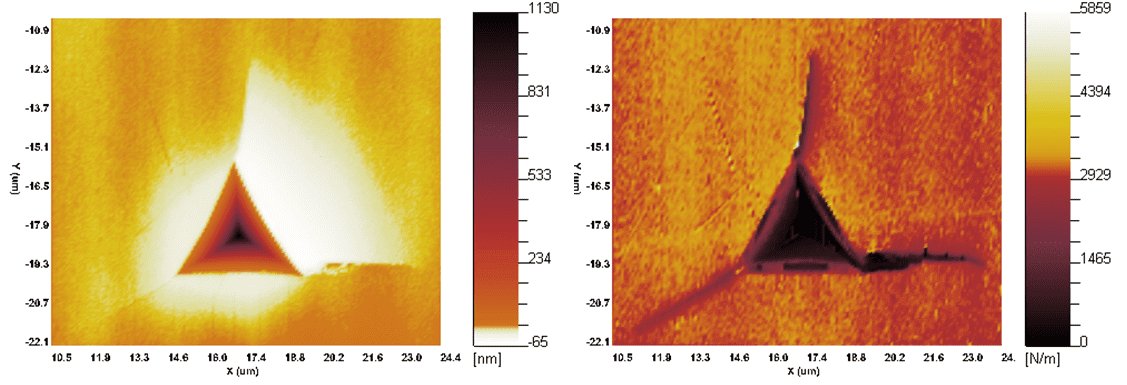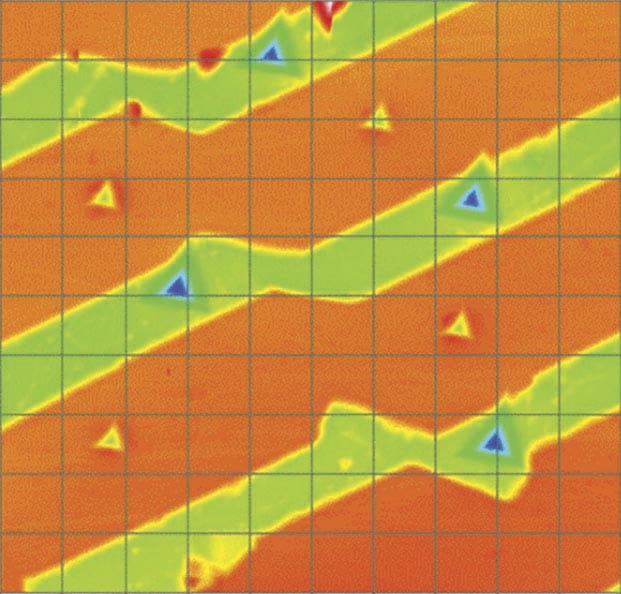■连续刚度测量(CSM)
Continuous stiffness measurement is used to quantify dynamic material properties, such as strain rate and frequency-induced effects. The CSM technique involves oscillating the probe during indentation to measure properties as a function of depth, force, time, or frequency. The option comes with a constant strain rate experiment that measures hardness and modulus as a function of depth or load, which is the most common test method used across academia and industry. CSM is also used for other advanced measurement options, including the ProbeDMA™ method for storage and loss modulus measurements and AccuFilm™ substrate-independent measurements. The CSM is integrated into the InQuest controller and InView software to deliver ease of use and data quality.

■InForce 50 Actuator
The InForce 50 actuator performs nanomechanical tests with forces up to 50mN. The patented electromagnetic force application ensures robust measurements and long-term force and displacement stability. Industry-leading mechanical design ensures that harmonic motion is constrained to one degree of freedom so that force and displacement are controlled along a single axis. The InForce 50 actuator is compatible with the CSM, NanoBlitz, ProbeDMA, biomaterials, sample heating, scratch, wear and ISO 14577 testing options. Tips are interchangeable among the entire line of InForce actuators.

■InForce 1000 Actuator
The InForce 1000 actuator performs nanomechanical tests with forces up to 1000mN. The patented electromagnetic force application ensures robust measurements and long-term force and displacement stability. Industry-leading mechanical design ensures one-degree of freedom harmonic motion so that force and displacement are controlled along a single axis. The tips are interchangeable with the entire line of InForce actuators. The InForce 1000 actuator is compatible with the CSM, NanoBlitz, sample heating, scratch, wear and ISO 14577 testing options.

■G200X Semi Pack
The G200X Semi Pack is a comprehensive test package designed to help improve yields and reduce latent defects for semiconductor and compound semiconductor films. The Semi Pack includes a wafer tilt chuck, AccuFilm™ Ultra Method Pack, Adhesion Method Pack, Thin Film Scratch Method Pack, Analytical Scanning Probe Microscopy, and automated routines for testing, image capture and survey scanning.

■300°C Sample Heating
The 300°C sample heating option allows the sample to be placed into a chamber for uniform heating while simultaneously undergoing tests with either the InForce 1000 or InForce 50 actuators. The option includes high-precision temperature control, inert gas backfill to reduce oxidation, and cooling to remove waste heat. ProbeDMA, AccuFilm, NanoBlitz and CSM are all compatible with the sample heating option.

■NanoBlitz 3D
NanoBlitz 3D utilizes the InForce 50 or InForce 1000 actuator and a Berkovich tip to generate 3D maps of nanomechanical properties for high-E (> 3GPa) materials. NanoBlitz performs up to 90,000 indents (300×300 array) at < 1s per indent, and provides Young’s modulus (E), hardness (H), and stiffness (S) values at a specified load for each indent in the array. The large number of tests enables increased statistical accuracy. Histogram charts show multiple phases or materials. The NanoBlitz 3D package includes visualization and data handling capabilities.

■NanoBlitz 4D
NanoBlitz 4D utilizes the InForce 50 or InForce 1000 actuator and a Berkovich tip to generate 4D maps of nanomechanical properties for both low-E/H and high-E (> 3GPa) materials. NanoBlitz performs up to 10,000 indents (100×100 array) at 5-10s per indent, and provides Young’s modulus (E), hardness (H), and stiffness (S) values as a function of depth for each indent in the array. NanoBlitz 4D utilizes a constant strain rate method. The package includes visualization and data handling capabilities.

■AccuFilm™ Thin Film Method Pack
The AccuFilm Thin Film Method Pack is an InView test method based on the Hay-Crawford model for measuring substrate-independent material properties using Continuous Stiffness Measurement (CSM). AccuFilm corrects for substrate influence on film measurements for hard films on soft substrates, as well as for soft films on hard substrates.

■ProbeDMA™ Polymer Method Pack
The Polymer Pack provides the ability to measure the complex modulus of polymers as a function of frequency. The pack includes a flat-punch tip, a viscoelastic reference material, and a test method for evaluation of viscoelastic properties. This measurement technique is key to characterizing nanoscale polymers and polymer films that are not well-served by traditional dynamic mechanical analysis (DMA) test instruments.

■Biomaterials Method Pack
The Biomaterials Method Pack provides the ability to measure the complex modulus of biomaterials with shear moduli on the order of 1kPa, and utilizes Continuous Stiffness Measurement (CSM). The pack includes a flat-punch tip and a test method for evaluation of viscoelastic properties. This measurement technique is key to characterizing small scale biomaterials that are not well-served by traditional rheometer instruments.

■NanoVision
The NanoVision option features a closed loop nanopositioning stage for high-resolution 3D imaging and precise targeting. NanoVision allows users to target indentation test sites with nanometer-scale precision and characterize individual phases of complex materials. NanoVision users can also examine residual impressions to quantify material response phenomena such as pile-up, deformed volume and fracture toughness.
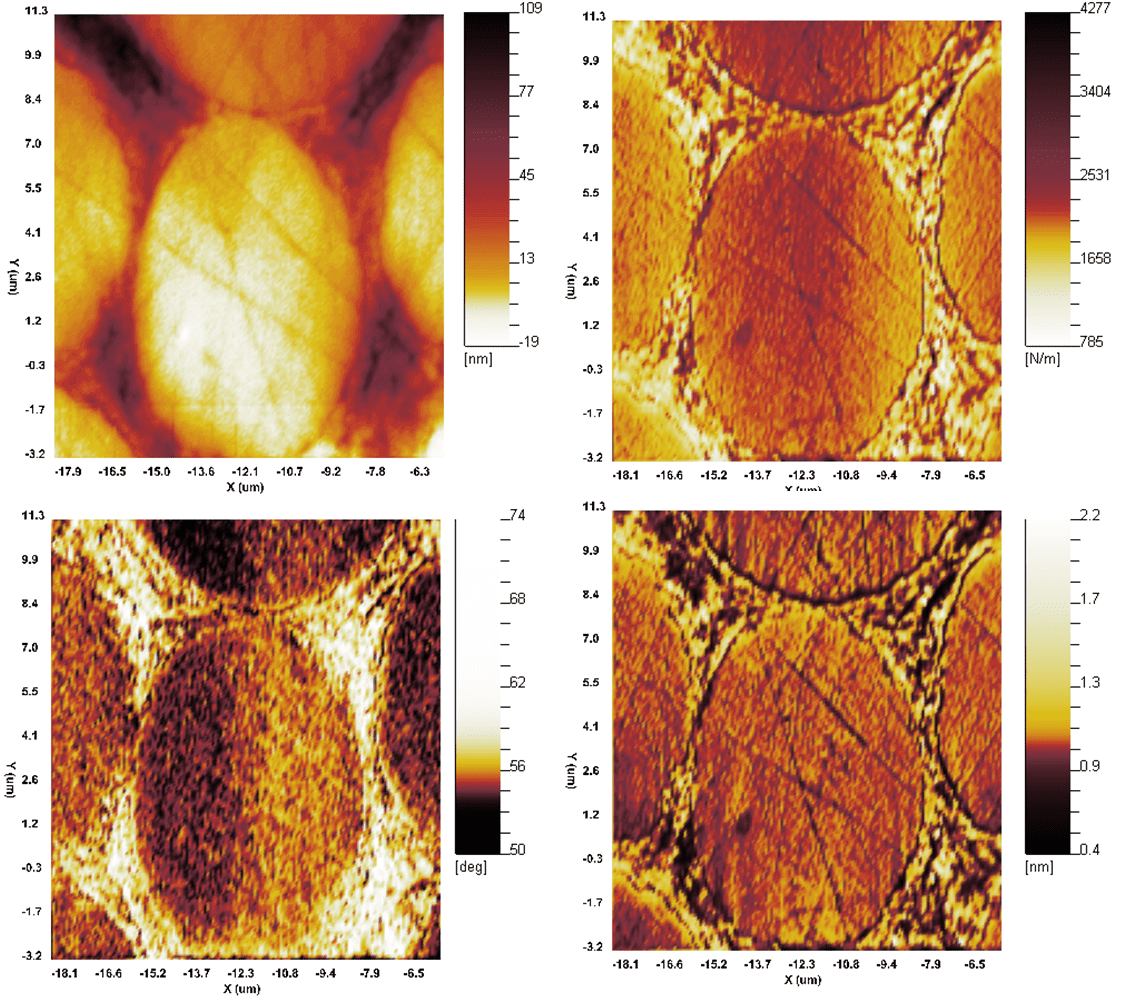
■Survey Scanning
The Survey Scanning option utilizes the accurate, repeatable X/Y motion of the Nano Indenter G200X system to provide a maximum scan size of 500μm by 500μm. 10nm linear encoders provide improved imaging over the G200. The NanoVision stage and Survey Scanning options can be used together for precise location targeting for nanoindentation tests, particularly valuable for determination of sample fracture toughness.
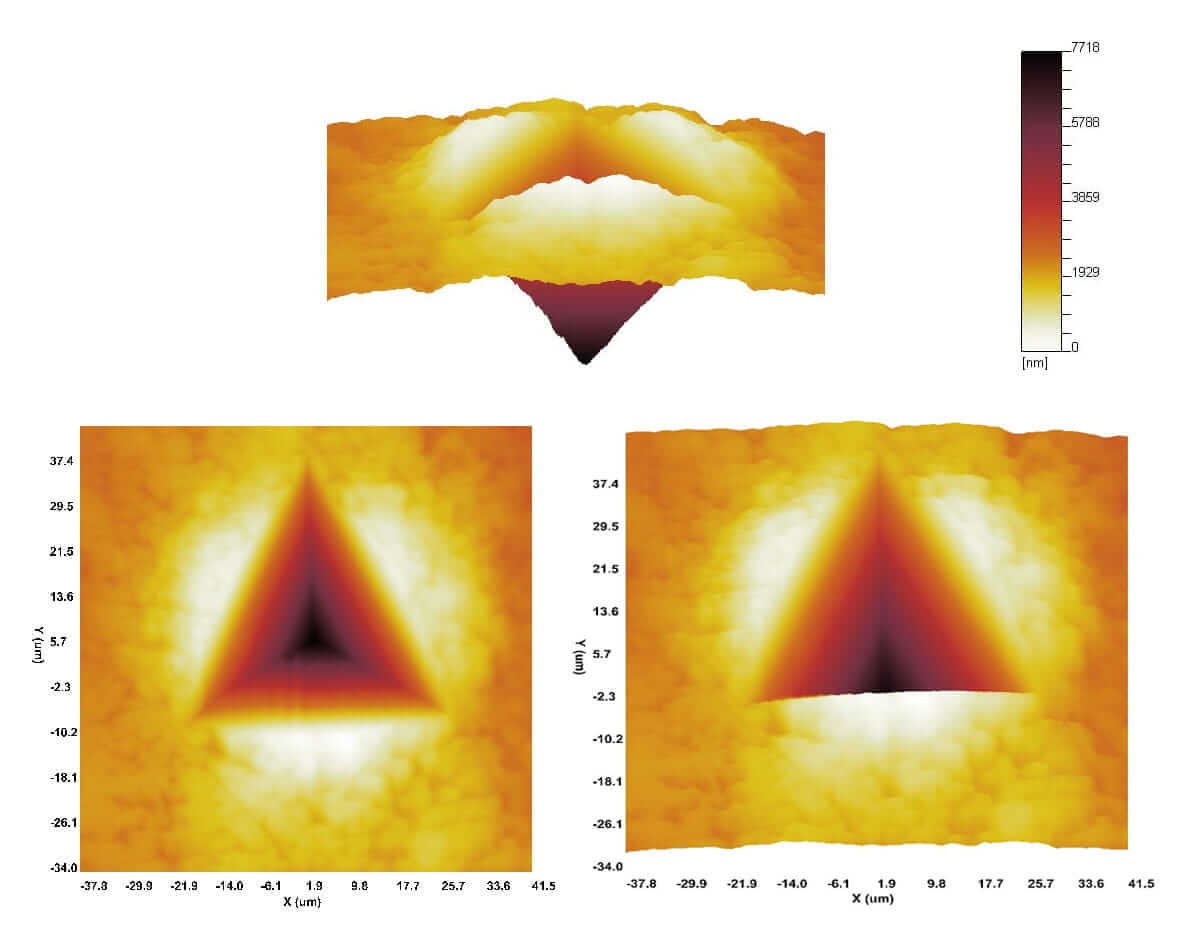
■InView Software Versions
All Nano Indenter G200X systems are powered by the standard InView software. NanoSuite® Professional version gives users access to pre-written test methods, including methods that comply with ISO 14577 standards. The InView Method Development option enables researchers to write their own InView test methods using a simple protocol. The InView software suite includes InView ReviewData and InFocus applications that make reviewing data and creating presentations easy. InView features a Simulation Mode so that users can write test methods, process and analyze data offline.


